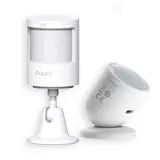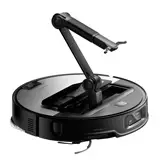We use information collected through cookies and similar technologies to improve your experience on our site, analyze how you use it and for marketing purposes.
Your privacy settings
We and our partners use information collected through cookies and similar technologies to improve your experience on our site, analyze how you use it and for marketing purposes. Because we respect your right to privacy, you can choose not to allow some types of cookies. However, blocking some types of cookies may impact your experience of the site and the services we are able to offer. In some cases, data obtained from cookies is shared with third parties for analytics or marketing reasons. You can exercise your right to opt-out of that sharing at any time by disabling cookies.
Manage Consent Preferences
Necessary
Always ON
These cookies and scripts are necessary for the website to function and cannot be switched off. They are usually only set in response to actions made by you which amount to a request for services, such as setting your privacy preferences, logging in or filling in forms. You can set your browser to block oralert you about these cookies, but some parts of the site will not then work. These cookies do not store any personally identifiable information.
Analytics
These cookies and scripts allow us to count visits and traffic sources, so we can measure and improve the performance of our site. They help us know which pages are the most and least popular and see how visitors move around the site. All information these cookies collect is aggregated and therefore anonymous. If you do not allow these cookies and scripts, we will not know when you have visited our site.
Embedded Videos
These cookies and scripts may be set through our site by external video hosting services likeYouTube or Vimeo. They may be used to deliver video content on our website. It's possible for the video provider to build a profile of your interests and show you relevant adverts on this or other websites. They do not directly store personal information, but are based on uniquely identifying your browser and internet device. If you do not allow these cookies or scripts it is possible that embedded video will not function as expected.
Google Fonts
Google Fonts is a font embedding service library. Google Fonts are stored on Google's CDN. The Google Fonts API is designed to limit the collection, storage, and use of end-user data to only what is needed to serve fonts efficiently. Use of Google Fonts API is unauthenticated. No cookies are sent by website visitors to the Google Fonts API. Requests to the Google Fonts API are made to resource-specific domains, such as fonts.googleapis.com or fonts.gstatic.com. This means your font requests are separate from and don't contain any credentials you send to google.com while using other Google services that are authenticated, such as Gmail.
Marketing
These cookies and scripts may be set through our site by our advertising partners. They may be used by those companies to build a profile of your interests and show you relevant adverts on other sites. They do not store directly personal information, but are based on uniquely identifying your browser and internet device. If you do not allow these cookies and scripts, you will experience less targeted advertising.






How to schedule routines to help children with their schedule
Do you feel like a plate spinner, trying to keep your kids' schedules in order? Breathe! You're not alone. Family life can be chaotic, but a good routine can be your secret superpower. Creating effective routines for children isn't just about organization; it's about providing them with security, predictability, and a solid foundation for growing up happy and responsible. Let's find out how to schedule routines that really work.
Why Routines Are So Important for Children
Routines aren't just to-do lists. They're so much more. They function like a map that guides your children through the day, eliminating uncertainty and reducing stress. A well-established routine can transform a chaotic home into an oasis of tranquility. Here's why they're so valuable:
How to Create Effective Routines for Your Children: A Step-by-Step Guide
Creating a routine that works for your family isn't a one-day task. It requires planning, patience, and flexibility. Here's a detailed guide to help you get started:
1. Assess Your Family's Needs
Before you start programming, take some time to analyze your family's specific needs. Consider the following:
2. Involve your Children in the Process
Your children's participation is key to the success of the routine. If they feel they have a say in the creation, they will be more motivated to follow through. Organize a family meeting and ask them:
Listen to their ideas and try to incorporate them into the routine, within reason. This will give them a sense of ownership and help them feel more engaged.
3. Define the Essential Activities
Identify the activities that are a must in your children's day. These may include:
Be sure to include time for play, relaxation and family time.
4. Create a Visual Schedule
For younger children, a visual schedule is a very useful tool. You can use pictures, drawings, or photographs to represent each activity. This helps them understand the sequence of events and anticipate what comes next. You can create a visual schedule on a whiteboard, poster board, or even a mobile app.
5. Set Realistic Schedules
It is important to be realistic when setting schedules. Don't try to cram too many activities into one day. Allow enough time for each activity and be flexible. Remember that children need time to play, relax and just be kids.
6. Be Consistent
Consistency is critical to the success of a routine. Try to follow the schedule as closely as possible, even on weekends. This will help your children internalize the routine and make it a habit. The more consistent you are, the easier it will be for your children to stick to the routine.
7. Offer Positive Reinforcement
Reward your children for sticking to the routine. Positive reinforcement can be as simple as verbal praise, a hug, or a small material reward. This will motivate them to follow the routine and feel proud of their accomplishments. Avoid punishments for not following the routine, as this can generate resentment and frustration.
8. Be Flexible
Even though consistency is important, it's also necessary to be flexible. Family life is unpredictable, and sometimes things don't go as planned. Don't get frustrated if the routine is interrupted occasionally. Just get back on track as soon as possible.
9. Review and Adjust the Routine Regularly
As your kids get older and their needs change, it's important to review and adjust the routine. Schedule regular family meetings to discuss how the routine is working and make necessary changes. This will give your kids the opportunity to express their opinions and feel involved in the process.
Examples of Routines for Different Ages
Here are some example routines for different ages that you can adapt to your children's specific needs:
Toddler Routine (3-5 Years Old)
School-Aged Kids' Routine (6-12 years old)
Teen Routine (Ages 13-18)
Additional Tips for Creating Successful Routines
Here are some extra tips to help you build successful routines for your kids:
Tools and Resources to Help You Program Routines
There are lots of tools and resources out there to help you schedule routines for your kids. Here are some ideas:
Conclusion: Turn Chaos into Calm
Creating effective routines for your children might seem challenging at first, but the benefits are worth the effort. A good routine can transform a chaotic home into a calm and organized environment, where your children feel safe, independent, and capable. Remember to be patient, flexible, and consistent. Involve your children in the process and celebrate their achievements. A well-established routine not only makes family life easier, but also helps your children develop valuable skills that will serve them throughout their lives.
Try these strategies and share your experiences in the comments! What tricks have worked for you to create successful routines? Share this article with other parents who might benefit!
Related Posts
Smart night lighting for kids' rooms
Bedtime can be a challenge, especially with young children. Creating a calm and safe environment is crucial for restful sleep. A powerful tool to achieve this is smart night lighting for children's rooms. We're no longer talking about a simple dim light, but a system that adapts to the needs…
Baby Sleep Monitors: What Technology Is Best?
Worried about the quality of your baby's sleep? You're not alone! Baby sleep monitors have become an essential accessory for many parents. But with so many options available, how do you know which technology is best for you and your little one? This article will guide you through the maze of sleep monitors ...
Motion Sensors for Kids: How to Ensure Their Safety?
Motion sensors have become ubiquitous. We find them in toys, nightlights, and home security systems. For children, these devices can be fascinating and useful. But, how do we ensure their safe use? Motion Sensors for Kids: A Parent's Guide This article explores how to choose, …
Baby monitors: what are the best options?
Welcome to the world of baby monitors. Expecting a baby? Or do you already have one at home and are looking for the peace of mind of being able to check on your little one from anywhere? Then you're in the right place. Baby monitors have evolved a lot. They're no longer just devices…